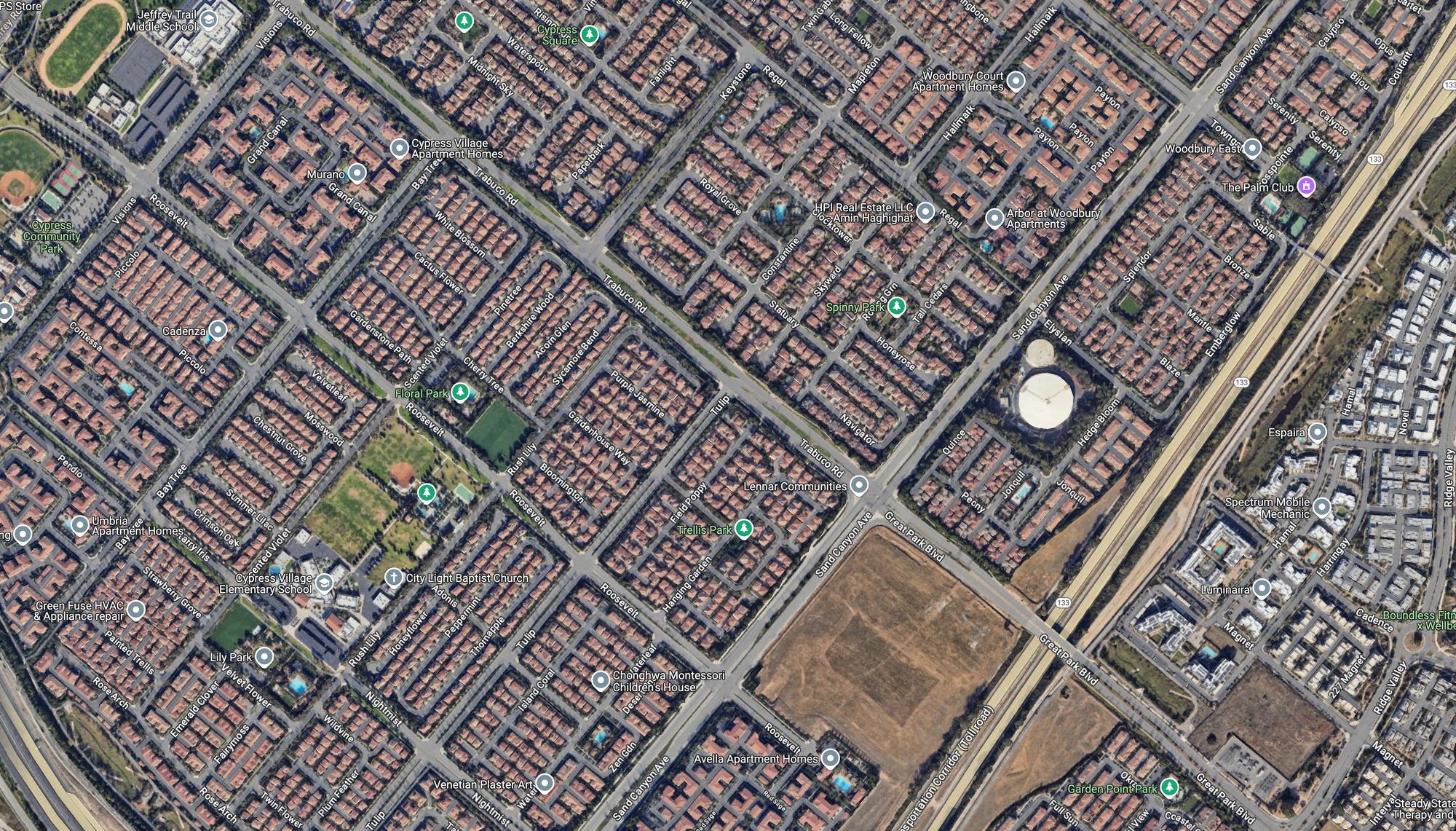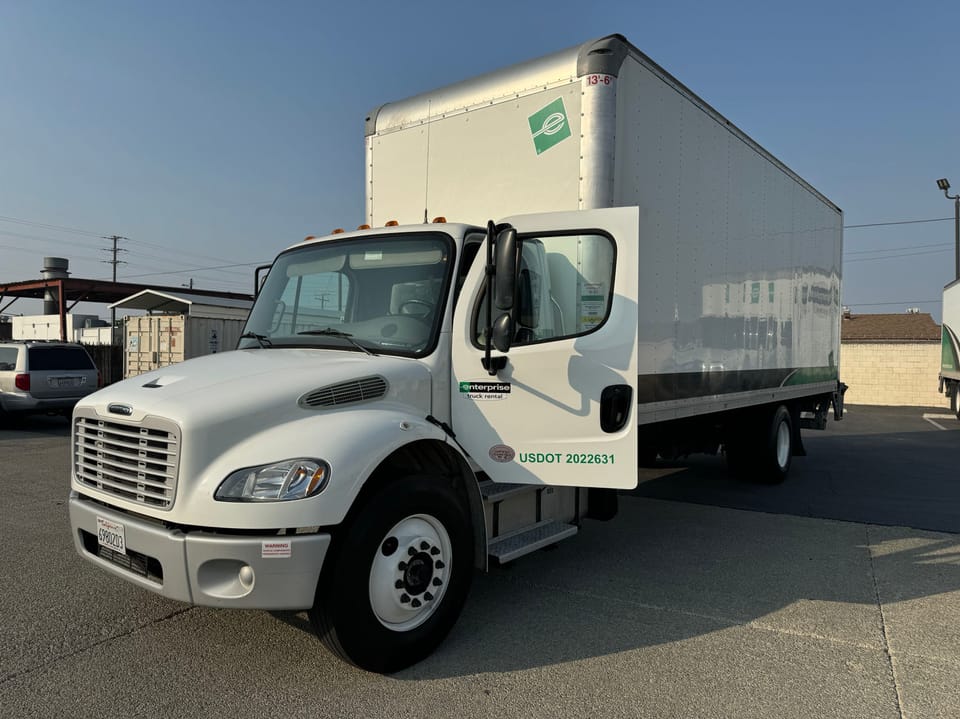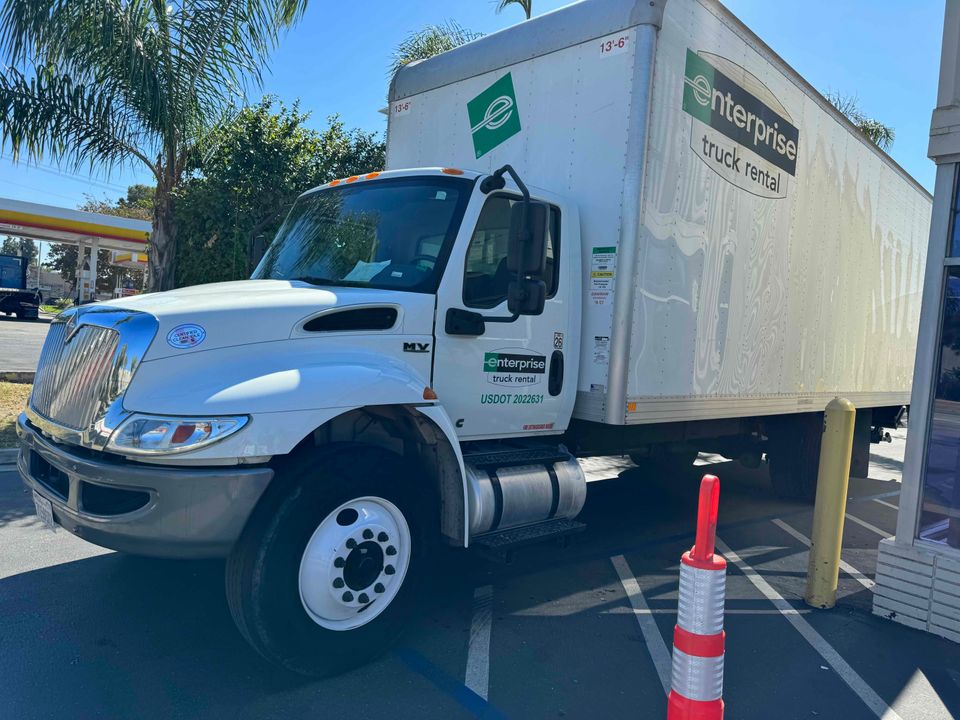The Bigger Isuzu
Cab-over trucks are definitely going to dominate the U.S. market.

Our trip with the bigger Isuzu happened at the end of September, but we decided to give the spotlight to the mysterious depot instead. Thinking it unwise to release two articles on the same day, we intentionally delayed this one, and it quickly slipped from our minds. We're also working on a blog about our trip to Canada, but that seems to be taking some time as well. So, let's dive into the freight truck story first.
First off, the truck in the featured image isn't the one we rented this time (though it's the same model). The photo wasn't even taken during this trip—we just wanted to showcase the cat. Back when we snapped this picture, we had rented the six-wheeled Porsche but began noticing the rising popularity of Isuzus. Unlike the 16-foot version, the 20-foot Isuzu NRR used by Enterprise features a "commercial-sized" box, which is much more convenient when you need to load pallets. It's no surprise people prefer it now that the only disadvantage has been eliminated.


Left: The 16' Isuzu (from the refrigerated truck story); Right: The 20' Isuzu.
The 20-foot box is essentially the largest that fits on an NRR. Positioned behind the standard-sized cab, the box makes the truck look a bit unbalanced. The wider box also somewhat obstructs the view since the cab width is only 81 inches, significantly narrower than American trucks carrying the same box. You're reliant solely on the two extended mirrors. Speaking of "the same box," the inner width still feels narrower than the 24-foot and 26-foot American trucks, even though Enterprise markets it as "commercial width." Fortunately, we were still able to fit the pallets using our traditional staggered layout.

It's no wonder that Isuzu cab-overs are rapidly gaining popularity in California—almost all the new medium-duty delivery trucks we see are Isuzus. They suit California's evolving environment as the state becomes more "Asian"—not necessarily in terms of food and demographics, but in the sense that newly developed areas are becoming denser. A truck without a nose is obviously more versatile in a packed neighborhood.

Another reason we prefer renting an Isuzu over larger trucks (as long as it can handle the job) is that the main road next to us is off-limits to trucks over 7 tons—and the Isuzu, even with the 20-foot box, has an empty weight just below that limit. It might exceed that when loaded and with two of our folks in the cabin, but it still attracts less attention than those huge trucks with noisy vacuum brakes.

We've also started seeing some F-series Isuzus on the road. These are rated at Class 6 or 7 and compete with "the American trucks" like the Freightliner M2 and International MV we've driven before. A large cab-over with a long box is so typically Japanese in style, and it would have been unimaginable to see them on the road just a few years ago. Hopefully, Enterprise updates their fleet soon, and we'll be sure to write a blog if we get the chance to drive one.

By the way, it has quite good fuel economy. Our typical trip to Long Beach is about 90 miles, with 60% of the distance empty and 40% loaded with cargo. Overall MPG is between 11 and 12, which we'd say is a good number. Though it's diesel—and diesel is expensive in this country—but that's another story.



